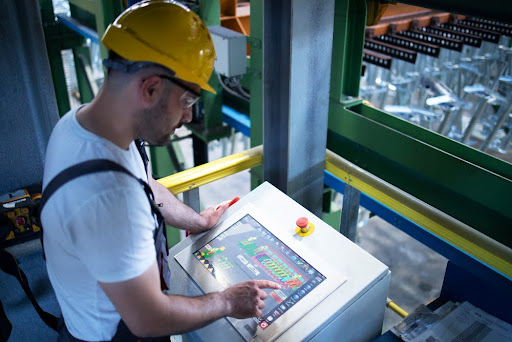Inefficiency in manufacturing can take any shape or form. Outdated technology, redundant tasks, poor communication – these are all leading examples of inefficiencies that plague the manufacturing sector and prevent it from running like clockwork.
In fact, if recent studies are anything to go by, inefficient workflows are a universal problem. As per one study, only a handful industries witness average efficiency levels of 72.51%. On the flipside, the picture looks quite bleak as others operate at only 28.7% of their potential production capacity.
Efficiency in manufacturing is everything. It is key to augmenting outputs while shrinking costs. Not to mention, it is the fine line between the making of good quality products and poor quality ones. If your company falls into the latter bracket, your profits are going to bleed.
So how do you get back on the track of peak production efficiency and prevent your manufacturing business from derailing? Let us show you!
Assess Current Workflow Efficiency
Often the answer to improving workflow efficiency does not lie in a manufacturing playbook but rather in the very process your plant follows. Closely analyzing it will help you discover problems – and problems will lead you to what you are looking for: solutions.
Map Existing Processes
With the help of flow diagrams or digital workflow mapping tools, create a visual representation of your entire production process – from the intake of raw material to the shipping of the finished product. Now analyze every step, transition, and tool properly to see how materials and information move throughout your production process. Share it with key stakeholders so they have the same information.
Identify Bottlenecks & Downtime Causes
Now that you have a fully mapped, visual workflow, it is time for the analysis to begin. This map will pinpoint exactly where delays, errors, and shutdowns occur. Upon a closer look, you will start seeing the shapes your bottlenecks take. Common ones include overrun machines, unbalanced distribution of labor, or disconnected departments. You can use this knowledge to come up with a concrete improvement plan. Use real-time monitoring tools to keep tabs of downtime, idle time, and reworks so you can weed out inefficiencies from their very roots.
Optimize Material Handling & Movement
Post your analysis, you are likely to find areas you can optimize. We assure you material handling and movement will be one of them. Efficient material handling is key to streamlining manufacturing workflows. An optimized material movement, storage, and access process ensures maximum productivity and safety.
Reduce Manual Handling With Automated Systems
Replacing manual systems with automated solutions can reduce time wastage and workplace injuries, making it a double win-win. We suggest adding conveyor systems, AGVs (automated guided vehicles), and robotic arms to your manufacturing process. Each of these systems will not only help you standardize material flow, but will also keep your crew safe from strain-related injuries. Steady and predictable, with automated systems, output inconsistencies and interruptions will become a thing of the past.
Improve Vertical Transport With Incline Conveyors
If you have a multi-level production facility, you can take productivity a step further by integrating an incline conveyor into your set-up. Vertical movement is inherently complex and slow, but it can be made faster and more efficient with incline conveyors. You can streamline the flow of materials across different floors and reduce dependence on time and labor-intensive methods such as manual lifting and using forklifts. All in all, incline conveyors can help you achieve faster throughput and safer operations.
Enhance Power Quality For Reliable Operations
Efficient manufacturing workflows can only be guaranteed if there are no power interruptions – especially if your facility is highly automated. Issues such as harmonics, voltage fluctuations, and electrical noise can cause your machinery to malfunction. The resultant data loss and unexpected downtime can diminish productivity and profitability. The only fix is a stable source of power supply.
The Disruptive Impact Of Poor Power Quality
If you have sensitive machines and devices such as sensors, drives, and PLCs in your facility, power disruptions can cause them to malfunction or shut down unexpectedly. Consequently, more issues can arise including incomplete production runs, lower output quality, and increased maintenance requirements. Over time, these can add up and lead to missed deadlines and inflated operational costs.
Use Passive Harmonic Filters For Stability
Installing a passive harmonic filter is an effective combative step for power quality issues. Designed to decrease harmonic distortion, this device will help you maintain stable voltage while safeguarding all connected equipment from the damage caused by electrical interference. Passive harmonic filters play a crucial role in increasing the lifespan of your machinery by improving power quality. They also contribute to smoother operational workflows, making them a must-have for any manufacturing facility.
Leverage Technology For Process Automation
While incline conveyors and passive harmonic filters are great investments, your manufacturing facility needs more to improve its workflows. Enter process automation technology. Meant to automate routine tasks, these can help you eliminate human error while offering greater control over the variables in your entire production process. From boosting throughput to enhancing resource planning – automation is a real boon.
IoT & Real-Time Monitoring
By implementing Industrial Internet of Things (IIoT), you not only connect the machines, sensors, and devices in your industrial facility, but also enable the collection of real-time data. This data can be shared instantly across the factory floor, thus enabling downtime-decreasing functions such as predictive maintenance, faster fault detection, and optimized production. The result? No more quality issues, thanks to IIoT.
Integration Of MES & ERP System
If you want end-to-end process control, linking your Machine Execution System and Enterprise Resource Planning software is a smart choice. Creating a unified ecosystem, their interconnectivity offers real-time visibility into your operations and streamlines workflows. It also enables the alignment of production goals with broad company-level objectives.
Train & Empower Your Workforce
Finally, to achieve peak workflow efficiency, it is critical to focus on the people side of things as well. Without skilled and engaged workers, even the most advanced manufacturing facilities can fail to work at their full potential. You need to invest in proper workforce training to ensure your employees can stick to your new and optimized workflows and adapt to the technological changes you implement.
Upskill Them For New Equipment & Tools
There is a learning curve to any new machinery or software you introduce to enhance and optimize your plant’s production capacity. Ensure your crew receives targeted training for each of them. Upskilling programs can help your crews adapt from legacy systems to emerging tech with confidence. This will reduce resistance to change while maximizing ROI.
Encourage Feedback For Continuous Improvement
Your frontline crew is going through the motions of your entire manufacturing process everyday. They are bound to have valuable insights to share. They can pinpoint specific inefficiencies and safety issues to you, which you can work towards rectifying. Encouraging regular feedback is an empowering move for your team – one that supports agile decision-making as well as ownership and innovation from the ground up.
Conclusion
Real manufacturing efficiency lies at the intersection of strategic initiatives and technological tools. Integrating power quality enhancing solutions such as passive harmonic filters with smart material movement systems such as incline conveyors can lay the groundwork of a sustainable, high production facility that works like a well-oiled machine.












